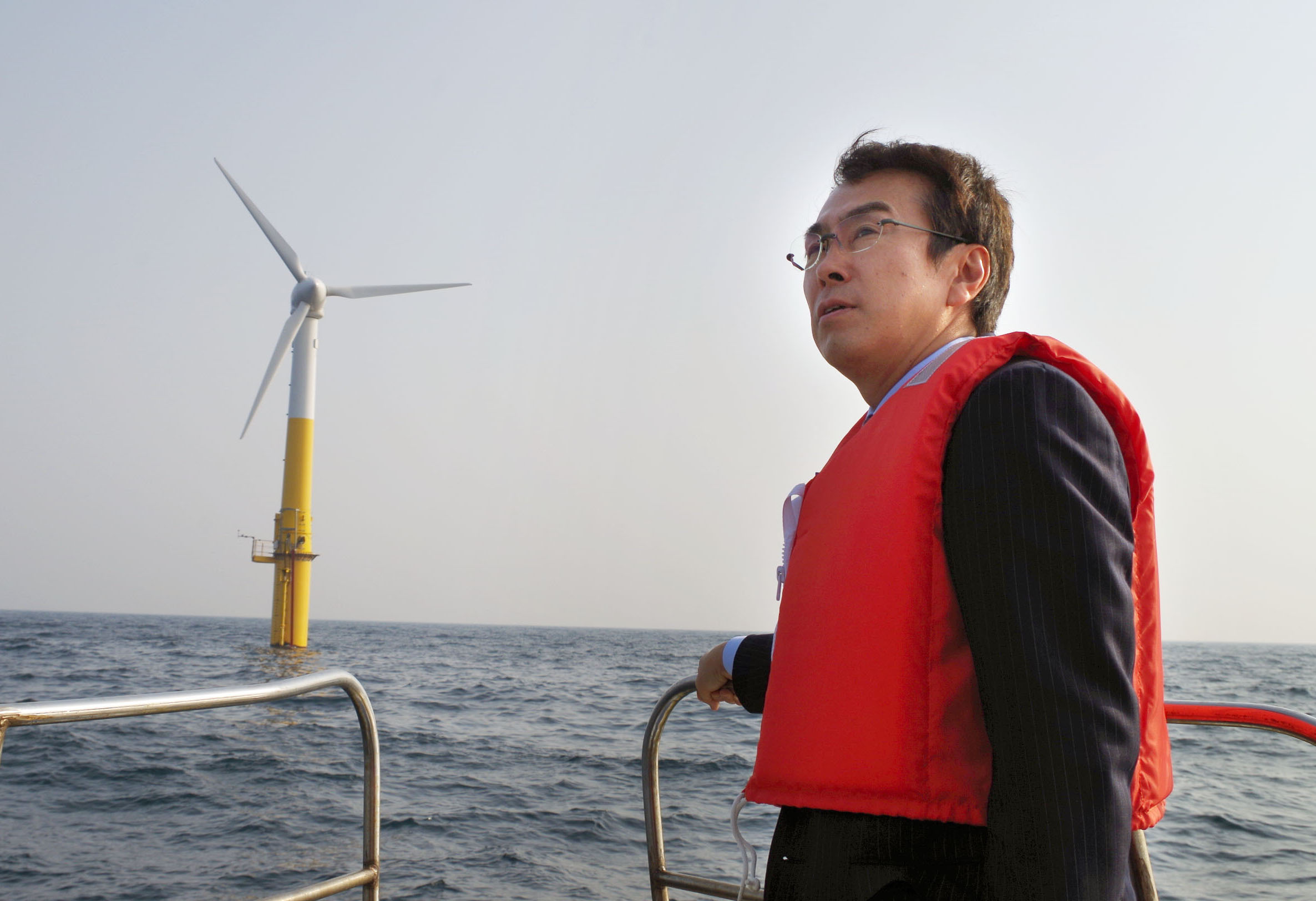A rare type of floating offshore wind turbine is being tested about 1 km off Kabashima, a 9-sq.-km island with some 110 households in Nagasaki Prefecture.
The wind turbine, with a 22-meter propeller arc diameter, generates 100 kwh and has been in operation since August as part of an Environment Ministry test project to develop a low-cost floating wind power plant.
Most wind turbines worldwide extend from pylons buried in the seabed, with just a smattering of the type that float. In the floating type, the pillar is anchored to the bottom and its lower hollow core is filled with seawater to keep it upright, so the pillar is self-righting like a "daruma" doll.
The upper part of the pillar that supports the wind turbine is made of steel while the lower part is made of concrete, allowing for drastically lower costs compared with those made entirely of steel.
Compared with wind power plants on land, strong and stable winds at sea allow plants built offshore to more effectively generate electricity.
The Environment Ministry plans to set up a wind turbine with an 80-meter-diameter propeller arc for experimental use this summer. This plant would be able to generate 2,000 kwh, or enough electricity for about 800 households.
The generated electricity will be sent via undersea cables to households on Kabajima, as well as to nearby islands via cables operated by Kyushu Electric Power Co.
Wind turbines rooted into the seabed, the most common type, are better usually constructed at depths of up to 50 meters. But Japan — despite being an island nation — is lacking in shallow beaches, making the typical setup difficult.
If the Environment Ministry's test project succeeds, it could be used nationwide, possibly even prompting the creation of a new global market.
Commissioned by the Ministry of Economy, Trade and Industry, research is under way for a similar project off the coast of Fukushima Prefecture, with construction for three types of offshore floating wind turbines set to begin this summer.




